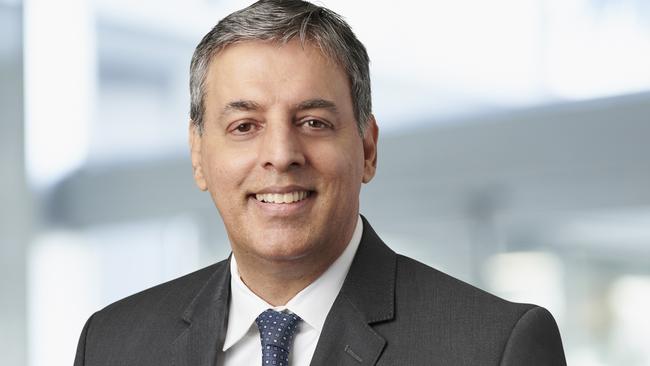Orica says so-called green ammonia will cost twice as much as traditional grey in 2025
Green hydrogen won’t be able to financially compete with natural gas in ammonia production and needs government assistance, Orica says.

Green ammonia will still cost twice as much as that made from natural gas by the middle of the decade despite the rush towards green hydrogen production around the world, says manufacturing giant Orica.
Orica managing director Sanjeev Gandhi made the prediction at the company’s annual investor day seminar on Tuesday, saying government support in Australia and other manufacturing centres would be necessary to make green hydrogen competitive. This was despite Orica pushing ahead with plans to install electrolyser units at one of its Australian manufacturing plans.
Orica did not put a direct price on green hydrogen and ammonia production in its presentation, but hydrogen – whether separated from methane in natural gas (known as “grey” hydrogen) or from water using renewable energy – is the key ingredient in ammonia manufacturing.
Mr Gandhi told The Australian the company’s studies on use of green hydrogen to make ammonia suggested its cost would not be directly competitive with grey ammonia by 2025, when Orica expects to be installing its own hydrogen plants in Australia.
“These costs can be anywhere between 50 to 100 per cent more expensive in Australia, compared to grey hydrogen – assuming a $12 gas price, and based on the current renewable price, and the cost of electricity and the cost of the investment,” he said.
The price differential in the US would be similar, Orica said on Tuesday, despite the vast subsidies on offer from President Joe Biden’s Inflation Reduction Act.
Mr Gandhi said Orica had already applied to access the federal government’s $2bn Hydrogen Fund to make up the difference for local production.
Orica said on Tuesday it planned to build a 50 megawatt-hour electrolyser at its Kooragang Island ammonia plant in New South Wales with energy major Origin, which Mr Gandhi said he expected would be the biggest hydrogen plant in Australia by the time it opens in 2026.

Orica has previously said the plant will produce about 12 tonnes of hydrogen a day, or about 4400 tonnes a year.
“So we are happy to produce green hydrogen by the way of a 50 megawatt-hour electrolyser that would be the largest commercial electrolyser in the world, if I can get that up and running in 2026. So it feels small, it is small, but it is still today the biggest one that will operate commercially,” Mr Gandhi said.
“But I still need that support from the hydrogen fund to bridge the cost delta, otherwise I will lose money on every tonne of hydrogen I produce.”
Mr Gandhi was speaking after Orica released plans to ramp up its effort to cut carbon emissions across the company’s operations, lifting its 2030 target for direct emissions to 45 per cent below 2019 levels, compared with a previous target of 40 per cent. Orica has also established a near-term target of a 30 per cent cut by 2026.
Mr Gandhi told analysts on Tuesday the company’s revised plans had been partly enabled by the certainty provided by the federal government’s revision to the safeguard mechanism, along with the adoption of new technology that already reduces emissions of nitrous oxide at its US and Australian nitric acid plants.
Mr Gandhi told The Australian that, although the company was a strong supporter of the safeguard mechanism reforms, the federal government still needed to push ahead with a carbon border tax to make sure jurisdictions that refused to put a price on carbon were not able to undercut Australian companies and Australia’s efforts to combat carbon emissions.
“We need to ensure that the Australian borders are not open to bringing in products which do not have a carbon regime – because that makes us uncompetitive,” he said.
“I’m investing, like my peers in the heavy emitters in this country – we are investing in decarbonising and we do not want to compete with imports that have a very strong carbon footprint.
“That’s not a level playing field and just causes carbon leakage. So the Carbon Border Adjustment Mechanism consultations with the government are very, very critical for us.
“Because on the one hand we want do what’s right for the economy and for our country. On the other hand, we still need to protect jobs here and be cost competitive.”
Orica shares closed up 22c to $15.88 on Tuesday.


To join the conversation, please log in. Don't have an account? Register
Join the conversation, you are commenting as Logout